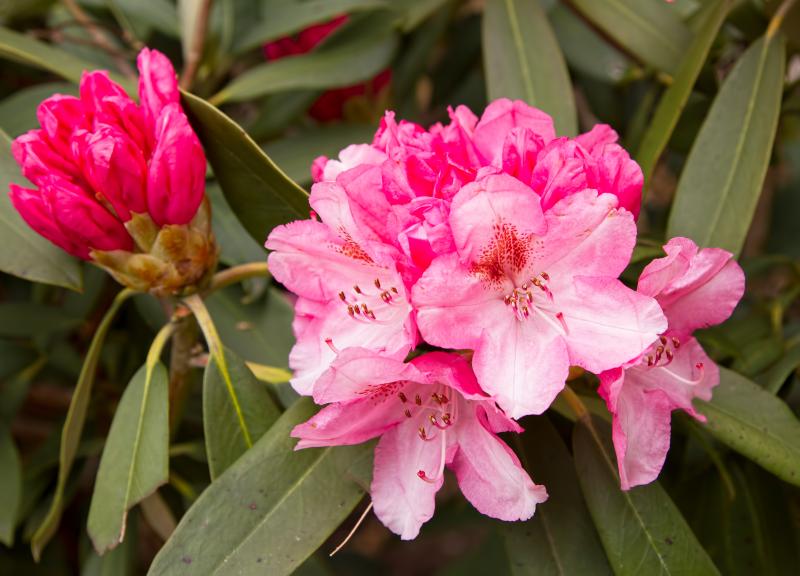What do you call a boomerang that doesn't work? A stick. And a cutting that doesn't root is also just a stick. With rhododendron season approaching, it is a good time to bone up on how to root rhododendrons and their cousins, azaleas. Cloning is the process of reproducing plants from cuttings. Because the resulting plants are clones, they will grow up and bloom exactly the same as the parent plant. Rhododendrons (Rhododendron spp.) are some of the easiest plants to propagate from cuttings.
Cuttings can be taken from stems that are still green, or from mature wood that is generally browner. Take green cuttings in late spring or early summer, while cuttings from mature wood should be taken in late fall or early winter. These older cuttings are called semi-hardwood cuttings and are easiest to root. Be sure to cut the stem just below a leaf node. The cuttings should be about 4-6-inches long. Leave two to four leaves on the top of each stem, and remove any flower buds.
Dip the cutting into rooting hormon, and plant in moist, well-draining potting soil. Cover the cuttings with a loose-fitting plastic bag to hold in humidity. Keep them evenly moist, but not soggy. Place the cuttings in a bright, warm spot away from drafts and heating vents. Mist them often until roots form.
You can also try growing cuttings in water, although gardeners have had mixed results getting rhododendrons to root in just tap water. Keep the leaves and about half of the cutting above water, and you might see them root in as little as a few weeks. Transplant the rooted cuttings into the garden. The ideal soil is acidic (pH 4.5 to 6), so they go well with other acid-loving plants such as pine trees and blueberries. Rhododendrons won't grow well in heavy soils such as clay.
Amend the garden soil with added organic material such as pine needles, compost or leaves. You can use a mulch of pine needles and pine bark that will acidify the soil when it breaks down. One of the more common rhododendrons is Blue Diamond, a dwarf evergreen shrub that grows up to 5 feet tall and blooms with bright bluish-purple flowers in the spring. Coastal Spice is a 5-foot-tall evergreen; its blooms are white with red flare that ages to light pink. It has a nice fragrance and is hardy to 10 F degrees. Nova Zembla is an evergreen that can reach up to 10 feet tall and blooms with brilliant red blossoms in the spring.
One nice thing about rhododendrons is that you really do not need to prune them. These evergreen beauties naturally form neat, mounded plants with a woodsy, rambling shape. If you do prune to keep them small, do the trimming right after they bloom, or you won't get flowers next year.
Get ready to enjoy the burst of rhododendron blooms and mark out your favorites. Take cuttings, and with a little luck, you will have perfect clones of your favorite flowers. And the cuttings that don't root? They are just sticks.





















































